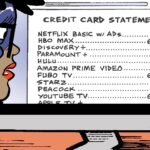There’s understandable anxiety about generative AI handling tasks that people used to do.
But just because someone is using generative AI to churn out marketing copy or creative doesn’t necessarily mean the results are any good.
Like any other tool, knowing how to get the most out of a large language model takes time and requires an understanding of rules and patterns.
When used strategically, though, AI can produce content that marketers consider on par with – or even superior to – the quality of their own work and in a fraction of the time.
Check your work
The quality of an LLM’s output depends on the level of detail in a user’s input and on the context, said Matt Swulinski, head of growth for AI-powered dictation app Wispr Flow and managing partner at growth marketing agency Full Funnel Growth.
There are best practices for providing LLMs with the sort of detailed, specific instructions they need to generate the most effective creative copy, he said at an event hosted by Full Funnel Growth in New York City last week.
Swulinski emphasized the importance of putting AI in the hands of skilled individuals: A tool is only as effective as the person using it, he said. Just like the best tennis racket in the world would be wasted on someone who doesn’t know how to play, AI won’t be useful if the person engaging with it doesn’t know how to provide the level of specificity needed to generate thorough outputs.
Instead of one-shot prompting, which he describes as inputting “just one line summarizing what you want” without any follow-ups or clarification, he encourages few-shot prompting, or “breaking apart your ask into very specific pieces,” such as product details, tone and length of post.
The final step of an LLM’s instructions should involve a certain amount of reflection. The human reiterates “what was important and what makes or breaks a good response for the output,” Swulinski said, and the LLM looks back to determine whether it provided inaccurate information (i.e., hallucinated) at any point. Ideally, the LLM would then self-correct.
As long as users define the desired output correctly off the bat, he said, an LLM shouldn’t need to go back and do too much rewriting.
Into the unknown
But now that AI can go beyond just generating copy and even check and improve its own work, where does that leave marketers?
In the lurch is the short answer.
Shane Perkins, CEO of investment and advisory agency Unite Digital Holdings, told AdExchanger at the event that he’s been seeing layoffs across the board. Agencies aren’t hiring. Rather, he said, they’re looking to “consolidate” roles and “upscale” current employees to further their AI capabilities.
Swulinski also emphasized the prevalence of downsizing across marketing teams. With AI, he said, what used to take five or six people to accomplish can now be condensed to one or two playing “strategic roles” and developing “agentic frameworks” that create scripts and storyboards.
That is to say, there are a couple of managers, and their employees are LLMs.
No one seems quite sure where exactly this leaves the next generation of marketers, as entry-level tasks are being phased out. But one thing is clear: They’ll need to understand AI.
The entry barrier for junior and mid-level talent is higher than it used to be, said Swulinski, because now there’s an expectation that they enter the workforce already “AI native.” People who can work with AI agents to build automated workflows read as “more powerful,” he said.
Perkins echoed that idea. “If we were to hire anybody,” he said (phrasing that doesn’t exactly inspire confidence), it would have to be someone with “demonstrated AI experience.”
But entry-level roles may “survive,” Perkins said, at least in the short term, at companies that don’t have a strong AI infrastructure yet and need help building it.
It’s a Catch-22. Perhaps the only way that entry-level employees can hang on is by furthering the same systems that are pushing them out.















